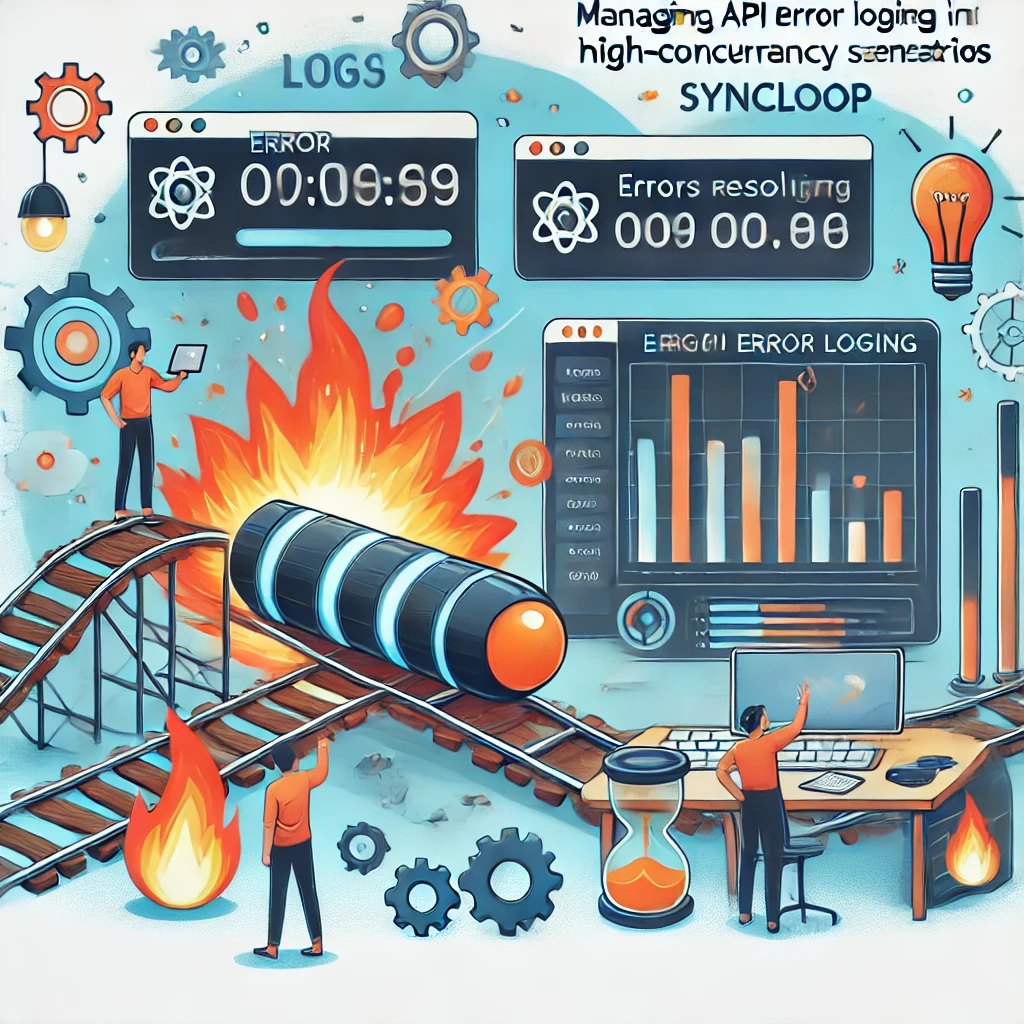Managing API Error Logging in High-Concurrency Scenarios with Syncloop

Syncloop provides advanced tools to manage API error logging in high-concurrency environments. With features like real-time monitoring, structured logging, and automated alerts, Syncloop simplifies error management and ensures system resilience. This blog explores how to effectively manage API error logging in high-concurrency scenarios using Syncloop and offers best practices for implementation.
The Importance of Efficient Error Logging
Error logging in high-concurrency environments is essential for:
- Identifying Issues Quickly: Detect and isolate errors affecting API performance or reliability.
- Maintaining Performance: Ensure logging mechanisms do not hinder API response times.
- Enhancing Debugging: Provide detailed logs to analyze root causes efficiently.
- Improving Reliability: Proactively address recurring issues to prevent outages.
- Meeting Compliance: Maintain audit trails for regulatory and operational requirements.
Challenges in High-Concurrency Error Logging
- Log Overhead Excessive logging can strain system resources and increase latency.
- Volume Management Handling large volumes of log data generated by concurrent requests.
- Real-Time Analysis Identifying and prioritizing critical issues amidst a flood of log entries.
- Storage Optimization Managing the storage and retrieval of logs for analysis and compliance.
- Security and Privacy Protecting sensitive information contained in logs from unauthorized access.
How Syncloop Simplifies Error Logging in High-Concurrency Scenarios
Syncloop offers robust features tailored for high-concurrency error logging:
- Structured Logging Organize log data into a consistent format for easier parsing and analysis.
- Real-Time Monitoring Track errors and performance metrics across APIs instantly.
- Log Aggregation Collect logs from multiple services into a centralized repository for streamlined management.
- Dynamic Filtering Filter logs based on severity, source, or other parameters to focus on critical issues.
- Automated Alerts Notify teams of significant errors or patterns requiring immediate attention.
- Scalable Storage Store and retrieve large volumes of logs efficiently for analysis and compliance.
Steps to Manage API Error Logging with Syncloop
Step 1: Implement Structured Logging
Use Syncloop to define a consistent log format, including fields like:
- Timestamp: When the error occurred.
- Severity Level: Critical, error, warning, or informational.
- Error Code: Unique identifier for the type of error.
- Request Details: Endpoint, payload, and user ID (if applicable).
- Stack Trace: Detailed error trace for debugging.
Step 2: Configure Log Aggregation
Leverage Syncloop’s log aggregation tools to:
- Collect logs from all microservices and APIs into a central repository.
- Tag logs with metadata to identify their origin and context.
- Integrate with external log management platforms if needed.
Step 3: Enable Real-Time Monitoring
Set up real-time monitoring in Syncloop to:
- Track error rates and identify spikes during peak traffic.
- Visualize error trends using dashboards for quick insights.
- Correlate errors with performance metrics like latency or throughput.
Step 4: Automate Error Notifications
Use Syncloop’s alerting features to:
- Trigger notifications for errors exceeding predefined thresholds.
- Notify relevant teams based on error type or impacted service.
- Escalate unresolved issues to higher priority levels.
Step 5: Optimize Log Storage and Retrieval
Implement scalable storage solutions with Syncloop to:
- Compress and archive older logs for cost-efficient storage.
- Index logs for fast retrieval during audits or investigations.
- Set retention policies to comply with data governance requirements.
Step 6: Conduct Regular Log Analysis
Use Syncloop’s analytics tools to:
- Identify recurring errors and their root causes.
- Detect patterns indicating potential system vulnerabilities.
- Optimize API workflows based on insights from log data.
Best Practices for High-Concurrency Error Logging
- Prioritize Critical Logs Focus on logging errors that impact performance or user experience directly.
- Minimize Log Overhead Use asynchronous logging to reduce impact on API response times.
- Leverage Dynamic Filters Filter logs based on severity or context during analysis to avoid information overload.
- Ensure Log Security Encrypt logs and restrict access to prevent unauthorized viewing or tampering.
- Automate Repeated Tasks Use Syncloop’s workflow automation to manage repetitive error-handling processes.
Example Use Case: E-Commerce Platform
An e-commerce platform uses Syncloop to manage error logging during high-traffic events:
- Structured Logging: Captures detailed logs for failed payment transactions, including timestamps, user IDs, and stack traces.
- Real-Time Monitoring: Tracks spikes in errors during promotional sales, enabling quick remediation.
- Automated Alerts: Notifies engineers of critical API failures affecting checkout functionality.
- Scalable Storage: Archives historical logs for audit and compliance purposes.
- Log Analysis: Identifies recurring errors in inventory synchronization workflows, leading to proactive fixes.
Benefits of Using Syncloop for Error Logging
- Improved Debugging: Quickly identify root causes with detailed, organized logs.
- Enhanced Performance: Minimize the impact of logging on API response times.
- Increased Reliability: Proactively address issues to maintain seamless operations.
- Scalability: Handle high volumes of log data effortlessly during peak loads.
- Compliance Assurance: Maintain secure and retrievable logs for audits and reporting.
The Future of Error Logging
As API ecosystems grow more complex, effective error logging will remain vital for maintaining performance and reliability. Syncloop equips developers with tools to manage error logs in high-concurrency scenarios, ensuring efficient operations and rapid issue resolution.
Image Description
A conceptual illustration showcasing Syncloop’s tools for managing API error logging in high-concurrency scenarios, featuring real-time monitoring, automated alerts, and scalable log storage. The image highlights streamlined debugging and efficient operations.
Back to Blogs